Main Sponsors
-
 Reiso Pécs
Reiso Pécs -
 Hotel Lycium****
Hotel Lycium**** -
 Pécs ZOO
Pécs ZOO -
 http://www.mecsekegyesulet.hu/
http://www.mecsekegyesulet.hu/ -
Doro Ékszer
-
 Hetényi Pincészet
Hetényi Pincészet -
 Zsályaliget Élménypark
Zsályaliget Élménypark -
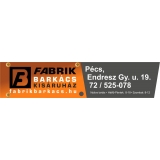 Fabrik Barkács Szaküzlet
Fabrik Barkács Szaküzlet -
 Katica tanya
Katica tanya -
 E.ON Hungary
E.ON Hungary -
 http://www.ipark-pecs.hu/
http://www.ipark-pecs.hu/ -
 https://www.otpbank.hu/otpklub/Fooldal
https://www.otpbank.hu/otpklub/Fooldal -
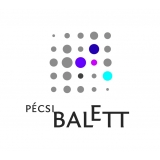 http://www.pecsibalett.hu/hindex.html
http://www.pecsibalett.hu/hindex.html -
 www.lakics.hu
www.lakics.hu -
 Gépszer
Gépszer -
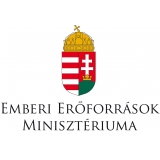 http://www.kormany.hu/hu/emberi-eroforrasok-miniszteriuma
http://www.kormany.hu/hu/emberi-eroforrasok-miniszteriuma -
 http://www.pnsz.hu/
http://www.pnsz.hu/ -
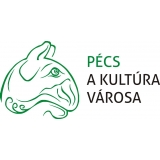 http://www.pecs.hu/
http://www.pecs.hu/ -
 Mischl Autóház
Mischl Autóház -
 Öko-Trade Ltd
Öko-Trade Ltd -
 Bóly and Vicinity Savings Bank
Bóly and Vicinity Savings Bank -
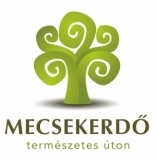 Mecsekerdő Forestry Ltd
Mecsekerdő Forestry Ltd -
 http://www.deltakarek.hu/
http://www.deltakarek.hu/ -
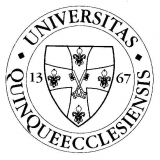 University of Pécs
University of Pécs -
 http://kloe.hu/
http://kloe.hu/ -
 http://www.lafarge.hu/
http://www.lafarge.hu/ -
 http://www.gondoldo.hu/
http://www.gondoldo.hu/


The Architectural Concept of the Concert Hall
There are two identities constituting the units of our world: inside and outside. Object and space. Extrovert and introvert. Active and passive. Community life and internal silence. The building that we can walk around, and the hall where music surrounds us. The building itself is vivid, moved by the dynamic symmetry of golden ratio. The hall itself is tranquillity filled by the symmetry of intellectual serenity.
It all derives from the mathematical basis of our world.
“Music that conveys universal truths itself, shows more direct connections with the physical and spiritual world order.
There are two sequences appearing significant in the sythesis of our world. As demonstrated below, both begin with the number 1 and 2. In the first sequence, each number is multiplied by 2 to get the next one, while in the second sequence, each remaining number is the sum of the previous two.
Both sequences can be found in European music.
The first sequence is represented by the symmetry of classical music. It is filled by pursuit of balance.
Not like in case of the second sequence. The Fibonacci-sequence is the most common presentation of golden ratio by integers. Golden ratio is usually called dynamic symmetry. Its most beautiful realisation in music is perhaps the 1st movement of Music for Strings, Percussions and Celeste by Bartók.
Golden ratio as a characteristic of the living world is perfectly efficient to express fight, struggle and tension of existence, just as balance to express the intellectual serenity. Bartók composed his most impressive pieces – Music, Sonata for Two Pianos – implying the sphere of golden ratio in the 1st movements, then principle of classic symmetry in the last movements.
The two systems relate to each other just like two worlds – more precisely, as two faces or sides of the same world. The first one applies balance as a guiding principle, the second one applies tension. They are connected in mutual presupposition and exclusion, they compose unity and contrast.”
/after Ernő Lendvai and Erzsébet Tusa/
The architectural characteristics of the concert hall are in close harmony with the common principles of design and musical composition. Dynamics and balance. Two sides of the same world.
The building elements: stone and wood. Hard and soft. Cold and warm. Age of myriads and centuries. Enduring and intimate. The ancientwhite stonesnail slowly embraces the concert hall lined with pure wood. As if we were listening to music inside a gigantic wooden shape or instrument.
Professional work in the Concert Hall
The opening of the concert hall means that a 200-years-dream is about to come true in the city’s musical development. Its essential artistic and professional aim, applying the principle of regionalism, is to introduce Pécs as the musical centre of the Southern Cultural Zone. As the residing orchestra, the Pannon Philharmonic Orchestra is going to determine the professional musical concept of the concert hall. The existing traditional concerts gain new dimensions: having the opportunity to invite dominant guest artists who have not visited Pécs before because of infrastructural sanctiness, as well as to perform pieces that could not be staged in the previous venues. These are conditions for further advancement of the orchestra -and now all attainable by the concert hall.
By an operation applying long-term, coherent professional principles, the concert hall is able to generate artistic workshops, create new compositions and performances, going far beyond the plain entity of an infrastructure of fine acoustics. The new programmes, like Staggione Opera productions, ClassJazz Creative Workshop, Classarts.hu Festival, and filmscore productions all aim at establishing a creative hearth. The concert hall’s studio facilities are capable of developing projects that meet the challenges of modern age and Internet.
As a space-supporting communal integrity, the hall can house artistic creation and meetings, and host community events. In favour, our orchestra announces an exclusive ball recalling the atmosphere of the 19th century, carries on the tradition of New Year gala concerts, performs extraordinary productions at the Feast of Music in June and on the International Music Day in October, and gives solemn concerts for All Souls’ Day, Christmas and Easter. As a new initiative, we introduce a gala concert for Valentine’s Day offering a felicitous and elegant occasion to celebrate one of the most important human emotions.
The hall unfolds various new opportunities for public meetings and discussions with the members of the orchestra and the artists, for example CoffeeBreak with Zoltán Peskó, or encounters with the Pannon Musiclover Society.
The concert hall brings children, youngsters and families closer to music, providing public areas like the grand hall, and several rooms for organising cosy programmes for the little ones. The OctOPUS programme series are innovative and style-breaking enough to attract pupils, just as are the Music by… audiovisual series performing filmscores in a modern and ear-catching way. SnailShell series welcomes families with small children offering amusing studies in the field of music.
The building as a physical entity is a representative of contemporary arts, since - by the investments of 2010- the city of Pécs itself becomes a significant centre for contemporary architecture in Hungary by the investments of 2010. On occasion of the 200th anniversary, we greet the opening of the concert hall with an exhibition about introducing the musicians of the past two centuries, which will be followed by exhibitions about the famous Hungarian composers Erkel and Liszt.
The Pannon Philharmonic Orchestra has collected a string of outstanding places of musical history in Pécs. Linking them into a special promenade gives the opportunity to the region’s visitors and residents to enjoy the experience of being part of the city’s musical traditions. These are the elements of creating a prosperous present and future – fulfilled by new chances and facilities that the concert hall offers.